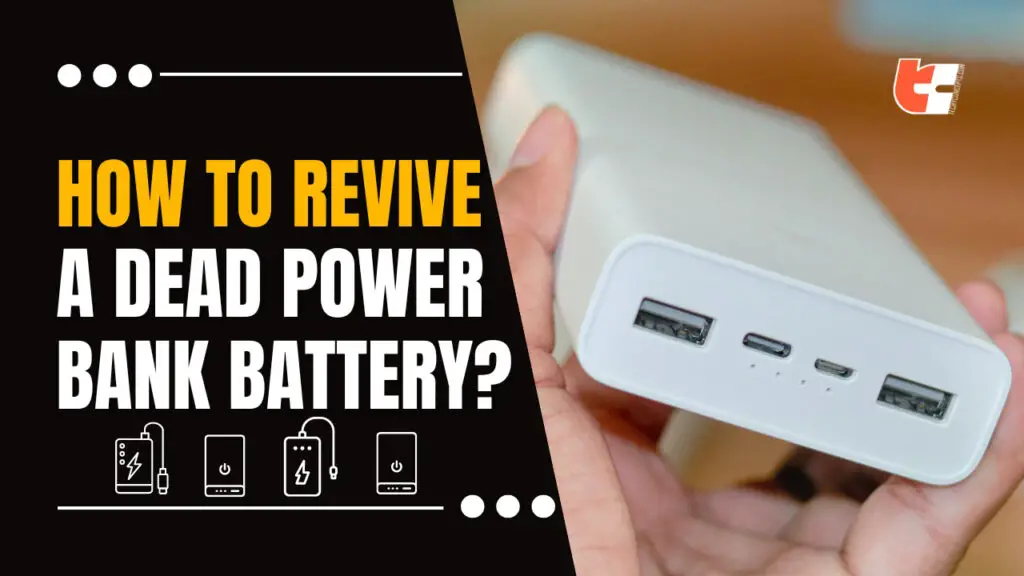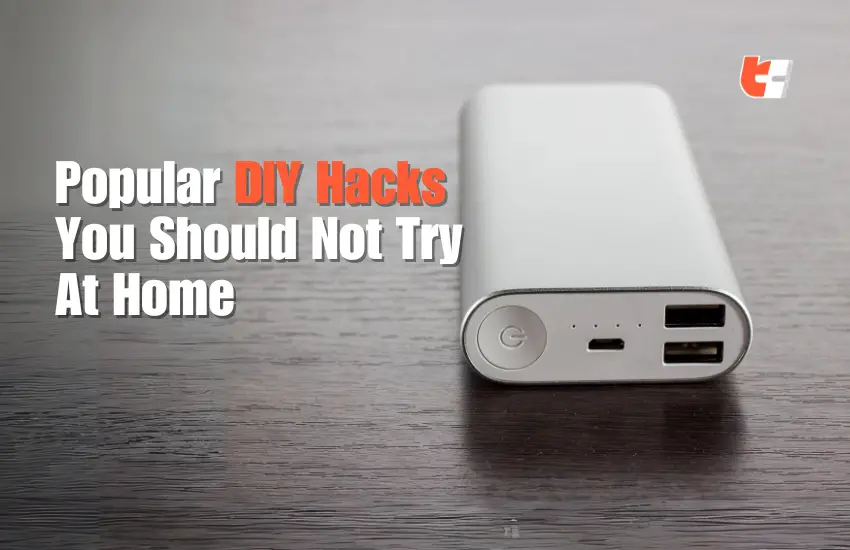In this ever-connected world we live in, a dead power bank can feel like a sudden blackout in our daily tech-driven lives. Spending one full day without a power bank around to fuel our electronic devices seems unimaginable.
If you’re having to suffer through this miserable situation where the battery of your power bank has died, fear not! For in this comprehensive guide, we will embark on a journey to breathe life back into your dead power bank’s battery.
So, stick around to find out what mysteries have caused its demise and also discover the secrets to resurrecting your indispensable companion.

Why is Your Power Bank Battery Dead?
Here are five potential reasons why your power bank battery performance may have significantly deteriorated over time:
- Overcharging: Leaving the power bank connected to a charger for an extended period can lead to overcharging, causing stress on the battery cells and reducing their overall lifespan. Most modern power banks have built-in protection mechanisms, but excessive charging can still affect performance.
- High Temperatures: Exposure to high temperatures, whether during charging or storage, can degrade the battery’s chemistry. Heat accelerates chemical reactions inside the battery, leading to a faster deterioration of its capacity over time.
- Frequent Deep Discharges: Regularly allowing the power bank to completely discharge before recharging can strain the battery. Lithium-ion batteries, commonly used in power banks, prefer partial discharge cycles over deep discharges, and constant deep discharging can contribute to premature failure.
- Old Age: Like any rechargeable battery, power banks have a limited number of charge cycles. Over time, the battery’s capacity naturally decreases, resulting in shorter usage periods between charges. If your power bank is several years old, it might simply be reaching the end of its usable life.
- Low-Quality Components: The quality of the power bank’s components, including the battery itself, can significantly impact its longevity. Lower-quality batteries or poorly designed charging circuits may lead to quicker deterioration or failure.
How to Revive a Dead Power Bank Battery?
Reviving a dead power bank battery can be challenging, but here are five potential methods you can try:
1. Check and Replace Charging Cable

Make sure that the charging cable you are using is functional. Sometimes, a faulty cable can prevent proper charging. If possible, try experimenting with a different cable and USB port to rule out connectivity issues.
2. Go For a Soft Reset
Perform a soft reset by disconnecting any connected devices, turning off the power bank, and then reconnecting it to a power source. This can help reset the internal circuitry and might revive the battery.
3. Extended Charging Period
Leave the power bank connected to a reliable charger for an extended period, preferably overnight. Sometimes, deeply discharged batteries need more time to recover. However, be cautious not to overcharge, as this can lead to further issues.
4. Inspect for Physical Damage
Examine the power bank for any physical damage or swelling. If you notice any bulging, leaks, or damage to the casing, it’s crucial to stop using the power bank immediately and consider replacing it. Physical damage can be a safety hazard.
5. Perform a Hard Reset
If a soft reset doesn’t prove fruitful, go for a hard reset. Your power bank may have a reset button, locate it and then press and hold it for 10 seconds to perform a hard reset. This can help in situations where the internal electronics may have become unresponsive.
6. Charge in Bursts
If leaving the power bank connected for an extended period did not help, try charging it in short bursts instead. Connect it to the charger for 15-30 minutes, then disconnect, and repeat. This method might be useful for reviving deeply discharged batteries.
7. Warm Environment
Cold temperatures can hinder battery performance. So try placing the power bank in a room-temperature environment, this might help if cold conditions were a contributing factor to its failure.
8. Professional Repair Services
f the above steps don’t work, consider seeking professional help. There are specialized services that may be able to assess and repair power bank batteries. However, keep in mind that the cost of repair might outweigh the value of the power bank, especially if it’s an older model.
Popular DIY Hacks You Should Not Try At Home

When it comes to reviving dead power bank batteries, don’t take advice from YouTube reels to be safe than sorry. Popular DIY common hacks show that mixing baking soda with water may help to recover a dead battery and can be used to clean the tops of batteries and get rid of corrosion. However, doing this can also permanently reduce the capacity of your power bank battery.
Also, putting aspirin to the battery is another hack that is often shown in videos claiming to revive dead batteries. However the final product – acetic acid, can attack the positive lead dioxide plates in your battery and permanently damage them, leading to short battery life and ultimately killing the battery for good.
Wrapping Up
Remember that attempting to revive a dead battery carries some risk, and success is not guaranteed. If these methods don’t work, it may be more practical to invest in a new power bank.
If you abide by all the troubleshooting tips we have illustrated in this guide and adopt preventive measures, you’ll easily be able to increase the longevity of your power bank and ensure it remains a reliable companion for your portable charging needs.
Good luck and safe travels on your journey to power bank revival!
Frequently Asked Questions
Q.1: Can powerbanks be repaired?
Answer: In most cases, power banks can be repaired, depending on the extremity of the problem. Common problems such as faulty charging ports, damaged cables, or internal battery issues can be repaired. However, if the internal battery is permanently unresponsive, it may be challenging and potentially unsafe to repair.
Q.2: Can a completely dead battery be recharged?
Answer: In many cases, a completely dead battery can be recharged, but it depends on the type of battery and the reason for its depletion. However, if a battery has been completely drained for an extended period or has experienced physical damage, it may be more challenging to revive. Some batteries have built-in protection mechanisms to prevent deep discharge, and attempting to recharge them might not be successful.
Q.3: What kills a power bank battery?
Answer: Overcharging, deep discharging, constant exposure to heat, physical damage, low-quality components, and long periods of inactivity can kill a power bank battery.
Q.4: How do you fix a dead power bank battery?
Answer: If a power bank battery is completely dead, you can try performing a hard reset and charging it using a high-quality charger and cable. If this doesn’t work, consider seeking professional help, but be cautious, as attempting to fix it yourself may pose safety risks.
Q.5: What to do with a dead power bank?
Answer: Repurposing a dead power bank will be very challenging, as its primary function relies on a functional battery. However, you can salvage its functioning components, like the casing or circuitry, for DIY projects or recycling. Or you may dispose of your dead power bank responsibly by recycling it. Many electronics retailers or recycling centers accept old electronics, preventing environmental impact from improper disposal.

